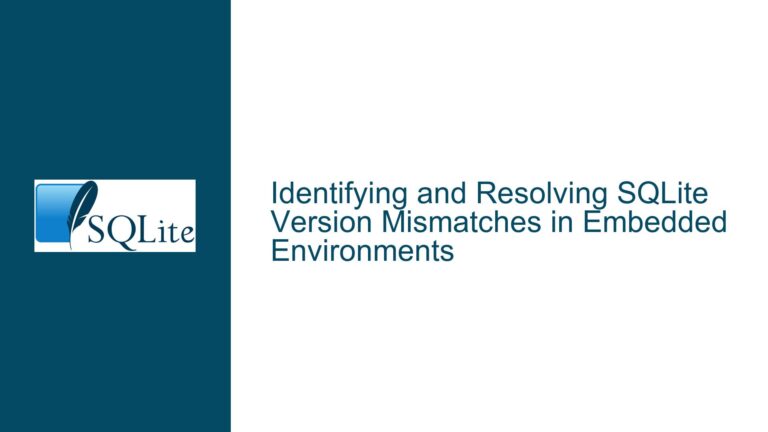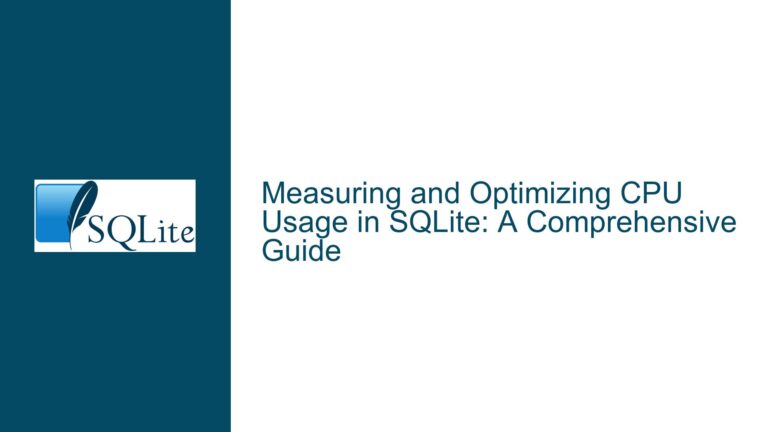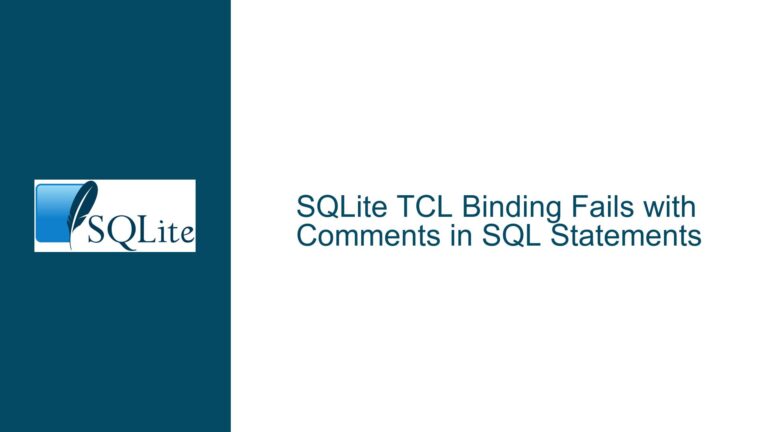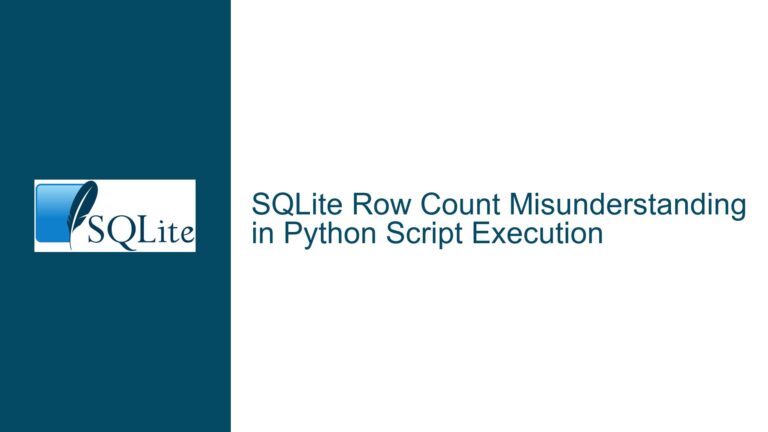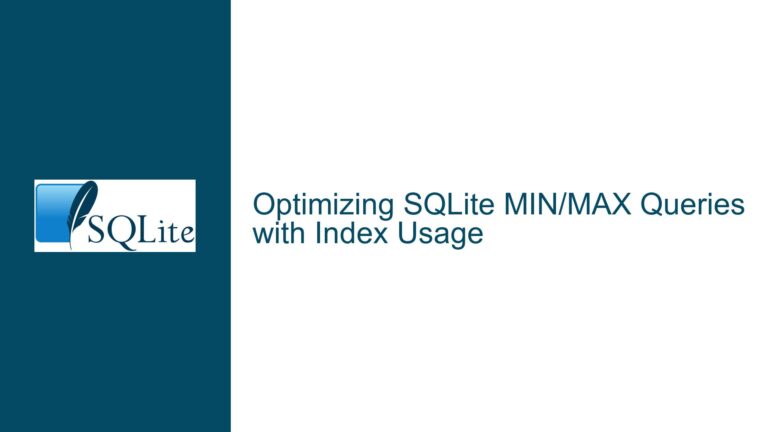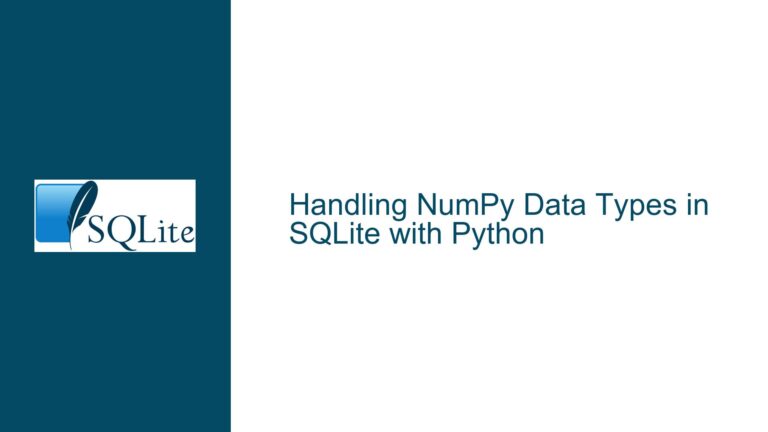SQLite Shell Startup Behavior and .sqliterc Configuration Documentation Gap
SQLite Shell Startup Behavior and .sqliterc File Handling The SQLite shell, a command-line interface for interacting with SQLite databases, exhibits a specific startup behavior that is not currently documented on the official SQLite shell documentation page. This behavior involves the automatic reading of a configuration file named .sqliterc (or its equivalent on different operating systems)…

